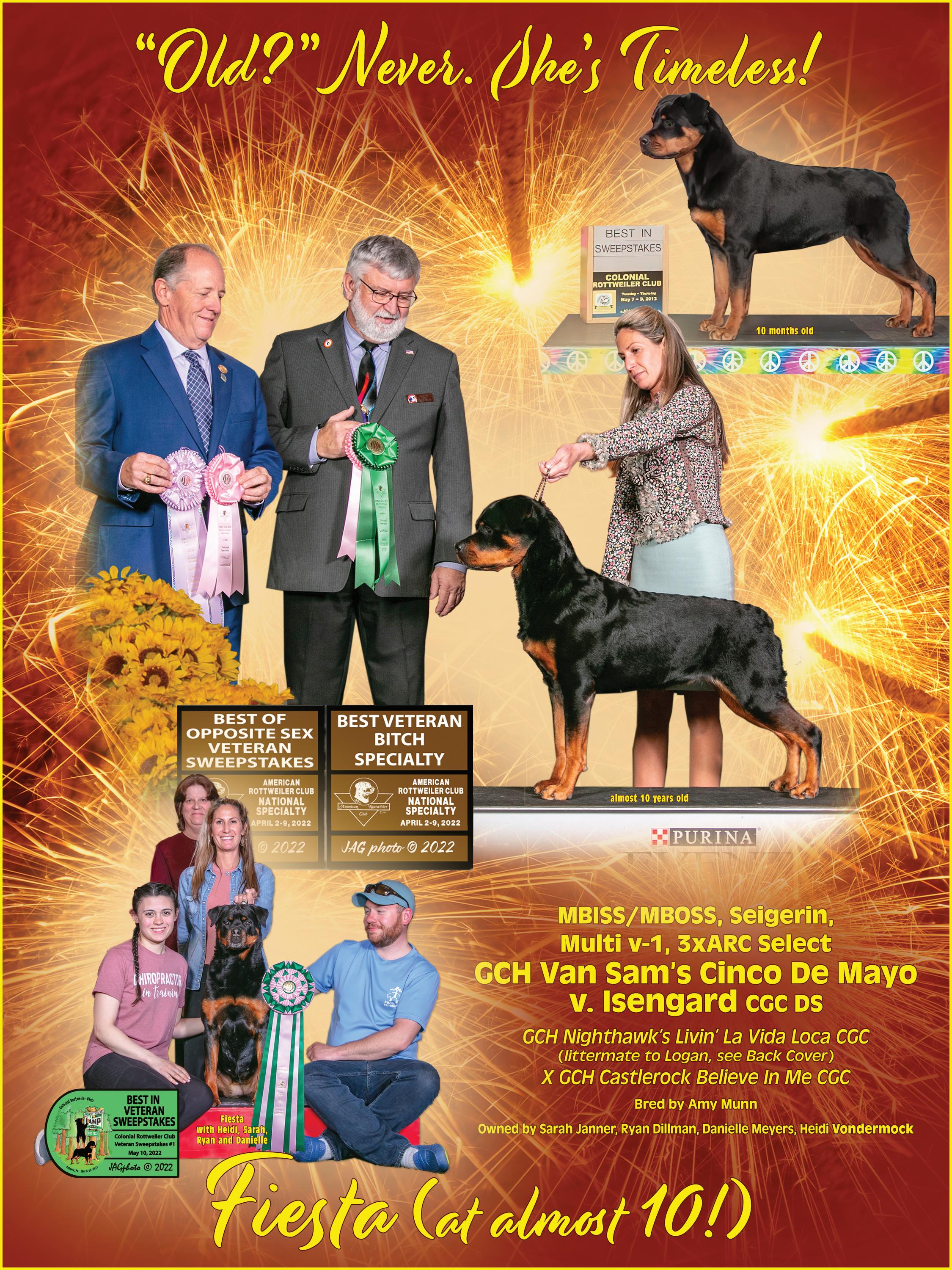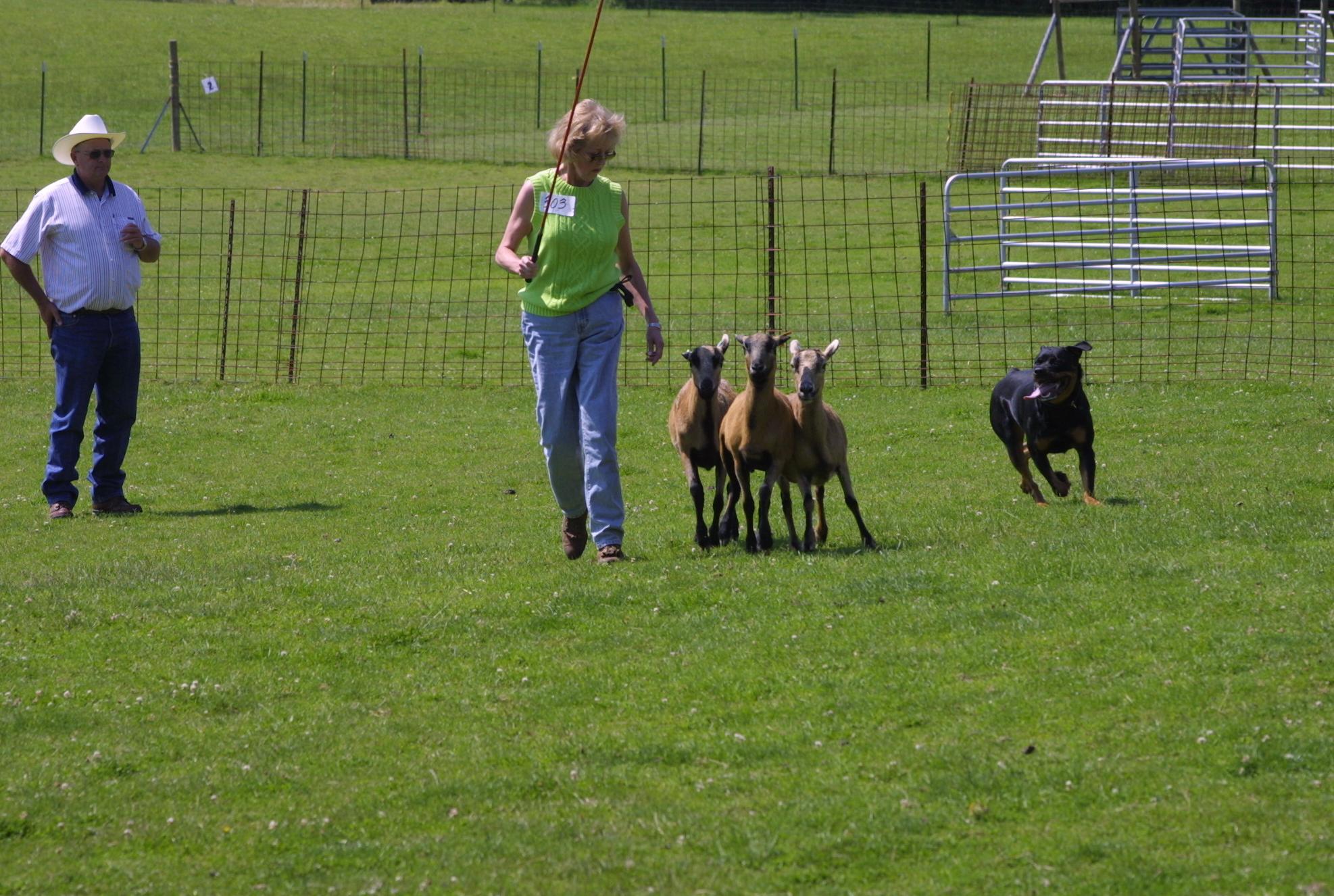Have You HERD? Glossary of Herding Terms (I - W) Inside Flanks: When the dog is asked to come between the stock and his handler. Lift: When the dog approaches the sheep to move them forward. The period immediately after the dog has reached the maximum extent of its outrun and starts to move the sheep in the intended direction. This is very important because it gives the sheep their first impression of the dog. See also Outrun. Light Sheep: Free-moving sheep that can controlled from a distance; the opposite of heavy sheep. Loose-eyed: A dog which does not show an intense gaze at all times on the stock. Such dogs may glance around or at the handler from time to time, and tend to take in a view of the whole group of animals. Usually upright body posture is displayed. Medium-eyed: Showing eye, but in a less intense form and usually with a more upright body posture. Off Contact: When the dog loses control of the stock, either by being too far away or by losing concentration. Outrun: When the dog runs out around the sheep to gather them prior to bringing them to the handler; the course taken by the dog in gathering its sheep. The ideal shape for an outrun in a trial is that of a pear, with the handler at the narrow end of the pear and the sheep at the widest point. See also Lift. Pen: A small enclosure with or without a gate, into which sheep are driven near the conclusion of a trial, without being touched by hand or by a dog. Power: Strong, self-confidence; a dog with power can move stubborn or fighting animals, often without nipping. Ram: An intact male sheep. Read: The ability of the handler to understand and anticipate the thoughts of the stock and/or the dog in order to maintain control over both. The ability of the dog to anticipate the behavior of the stock. Setout Dog: Dog that is used to sort and setout stock at trials. Shed or Shedding: Sorting off one or more specific sheep from the rest and driving it or them away from the other sheep. Single or Singling: Shedding or separating only one sheep. Strong Dog: All references to strength and power reflect solely on the dog’s attitude toward the sheep; they have nothing to do with physical characteristics of the dog. A strong dog comes up to its sheep confidently and bodly and does not give ground if attacked. The sheep are able to sense the determination of this type of dog and more readily give ground to it. Strong-Eyed: Showing all the characteristics of eye to a marked degree. A dog with overly strong eye may remain in place, staring intently, rather than move the sheep; sometimes referred to as sticky-eyed. Take Time or Steady: A command to the dog to slow down and approach the sheep quietly. That Will Do: The command releasing the dog from his work. Walk Up: A command for the dog to walk toward the sheep. Way To Me: The usual, traditional Scottish command for sending the dog around the sheep in a counterclockwise direction. Weak Dog: The opposire of a strong dog. Weak dogs turn tail if the sheep show fight. A weak dog may flank back and forth rather than walk straight in toward the sheep. Wearing: (1) The side-to-side movement of the dog to keep the livestock grouped. (2) Also, when the dog moves the stock to the handler, as in the fetch. (3) When sheep are shed or singled, those held back are said to be worn by the dog. Wether: A neutered male sheep. Wide-Running: A dog who makes wide passes around the stock, naturally keeping a distance away from it. Wool-Pulling: Nipping or gripping at the bodies of sheep, marking the flesh by tearing out hunks of wool (called body biting on cattle). Biting at the body of any type of stock is a fault.
16
COLONIAL ROTTWEILER CLUB | 2ND QUARTER |JULY 2022







